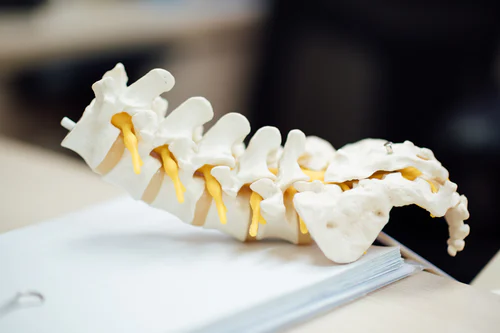Doesn’t a spinal misalignment sound like you have a crooked spinal? You might automatically assume it’s an issue that occurs when the vertebrae in your spine are noticeably out of their correct positions. However, let a chiropractor at Integrated Health & Injury Center, serving Atlanta, Decatur, and the nearby Georgia region, explain exactly what a spinal misalignment means.
General Information
Your spine, in general, provides the neck and back with support. It allows you to carry your body weight. The spine has vertebrae and discs, and a spinal misalignment occurs when the vertebrae — the bones in your spine — don’t align with the discs. The discs are rubbery cushions located in between your vertebrae that help with mobility in your spinal.
With the spine enduring such stress, it can shift out of place easily. A car accident or other trauma could also cause the vertebrae to become misaligned from the discs. However, typically, you won’t notice a shift in the position of your spine. The ill-positioned vertebrae usually are only slightly out of place, so you can’t see them in the mirror or feel them with your fingers.
Symptoms
While you usually can’t visibly see the misalignment after an injury or gradual wear and tear, you may notice the symptoms from it. For instance, you may have back pain. It’s possible you could experience nerve-related symptoms, including the following:
- Burning
- Numbness
- Tingling
- Muscle spasms
- Stiffness
- Inflammation
Diagnosing Misalignments
You can’t self-diagnose a spinal misalignment because the symptoms are similar to various other conditions. For instance, you could wake up with back stiffness and pain if you have arthritis affecting your spine. On the other hand, if you have a pinched sciatic nerve, you may have weakness, numbness, or tingling.
At Integrated Health, our back and neck chiropractor will inquire about the symptoms you suffer from and when they’re most prevalent, such as in the morning or upon waking. Your chiropractor will ask about any recent or previous injuries you sustained to the area as well as any chronic conditions you have that affect the back or neck.
The next portion of your appointment might consist of imaging. This diagnostic will allow the chiropractor to view your spine and assess it for any misalignments. Your practitioner may also use the imaging to rule out other causes of pain and discomfort.
Treating Misalignments
Once your practitioner determines the cause, you’ll receive chiropractic care tailored to your needs. For example, your chiropractor may recommend you undergo routine chiropractic adjustments. During these treatments, the practitioner will move the discs in your back manually. Sometimes, the process will incorporate a specialized tool that aids in the process.
The specialist gently moves the vertebrae so they realign with the discs and you don’t feel the bones moving or barely feel them at all. In fact, most people have little to no pain or discomfort from this process.
Physical therapy for back pain or neck pain could help as well. You’ll perform exercises guided by your chiropractor. They gently stretch your spine and can help you maintain or improve your flexibility. As you’re healing, your practitioner may recommend natural comfort measures to complement your treatment plan.
A misalignment isn’t a deformity like scoliosis. Instead, it’s a minor malposition of one or more of your vertebrae. Fortunately, chiropractors see this problem commonly and understand how to target the root of the issue through treatments, such as physical therapy for back pain.
If you have signs of a spinal misalignment, contact Integrated Health & Injury Center, serving Atlanta, Decatur, and the surrounding Georgia region, at 404-288-9000. You may also use our convenient online form.


